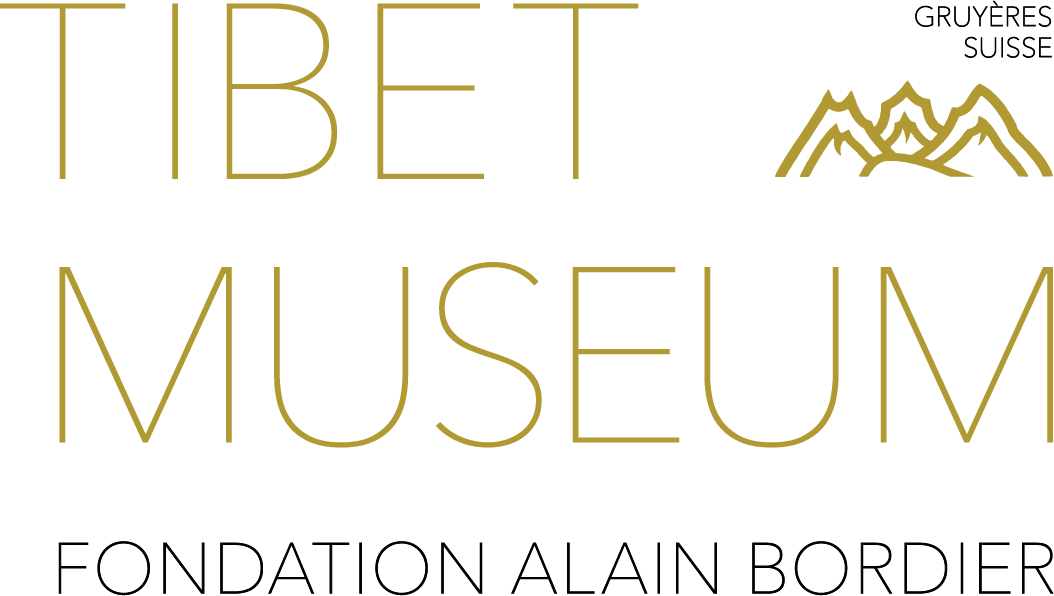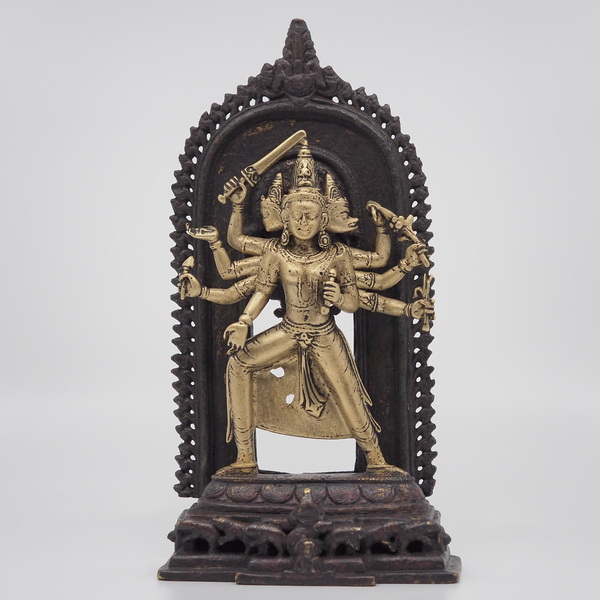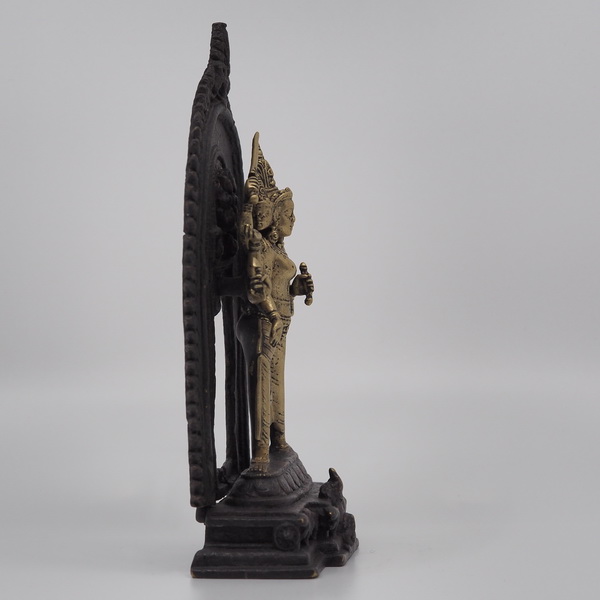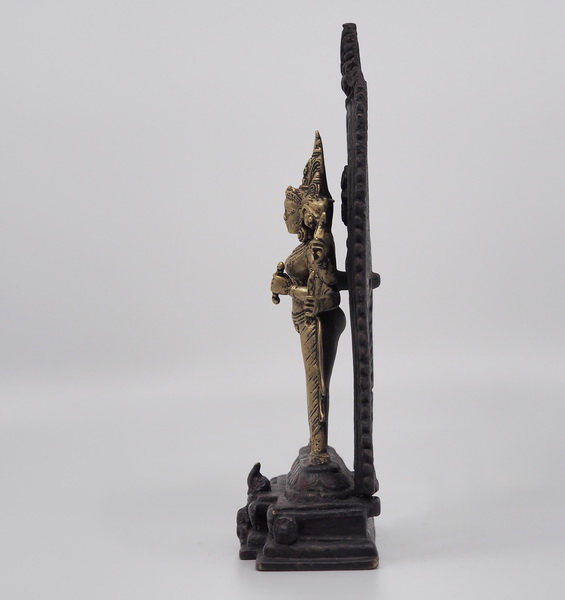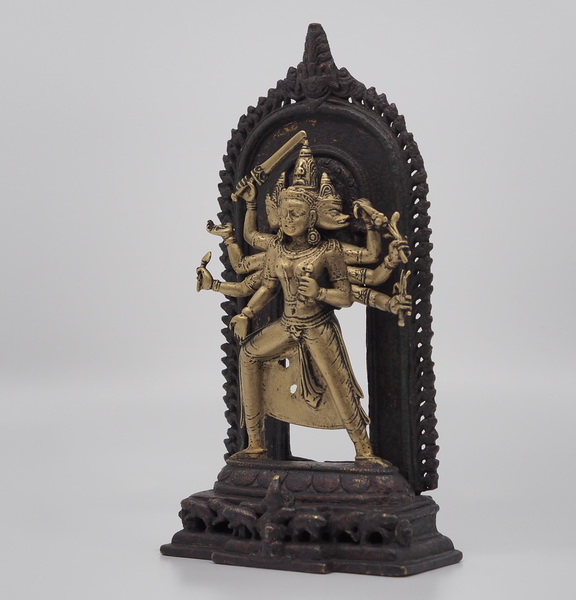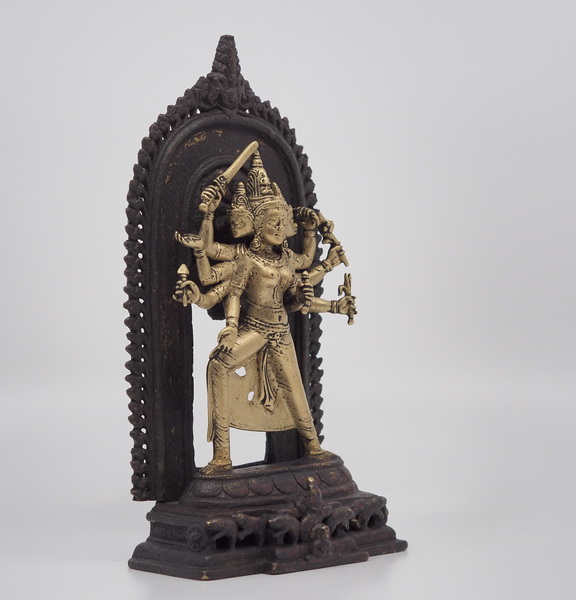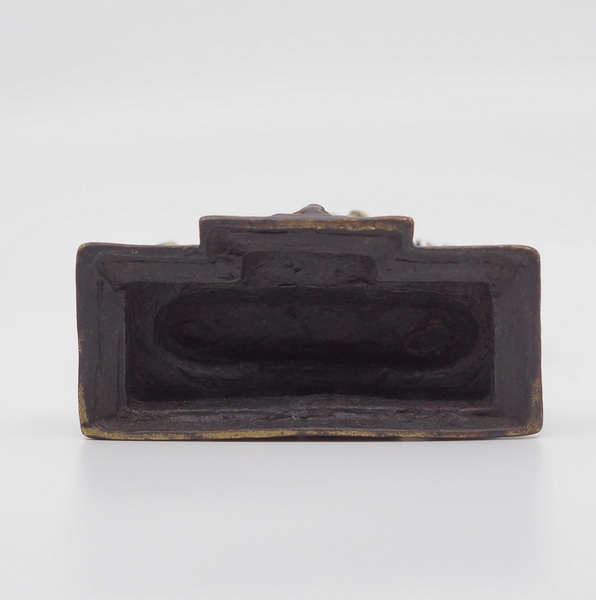ABS 308
Code: ABS 308
Country: India (north-east)
Style: Late Pala Style
Date: 1000 - 1100
Dimensions in cm WxHxD: 11 x 20
Materials: Brass
Of the few Pala bronzes of Marici known this appears to be perhaps the finest.
(Formerly von Schroeder Collection 2014-12)
(From Wikipedia, the free encyclopedia)
Marici (lit. "Ray of Light"), is a deva, as well as a bodhisattva associated with light and the sun. She is among the lists one of the guardian devas, specifically the Sixteen Devas, the Twenty Devas and the Twenty-Four Devas. In Taoism and Chinese folk religion, Doumu (Chinese: pinyin: Dǒumǔ Yuánjūn) is considered to be synonymous with Mārīcī within Chinese Esoteric Buddhism.
Marici is depicted in several ways. Some examples included:
*As a man or woman on an open lotus, the lotus itself sometimes perched on the back of seven sows.
*As a male deity riding a boar, often having two or six arms.
*Riding a fiery chariot pulled by seven savage boars or sows.
*As a multi-armed woman with a different weapon in each hand standing or sitting on the back of a boar.
*As having three faces and six or eight arms.
In Tibetan literature, the Bari Gyatsa contains five different descriptions of Marici:
*Oḍḍiyāna Mārīcī
*Kalpa Ukta Mārīcī
*Kalpa Ukta Vidhinā Sita Mārīcī
*Aśokakāntā Mārīcī
*Oḍḍiyāna Krama Mārīcī
The Drub Tab Gyatso has six descriptions:
*White with five faces and ten hands
*Yellow with three faces and eight hands
*Yellow with three faces and eight hands
*Dharmadhātu Īsvarī, red with six faces and twelve hands
*Picumī, yellow with three faces and eight hands
*Red with three faces and twelve hands
The Nartang Gyatsa and Rinjung of Taranata describe one form.
Both the Vajravali and Mitra Gyatsa describe a mandala of Mārīcī that includes twenty-five surrounding figures.
This is not an exhaustive list, and many more depictions of Mārīcī exist throughout the Buddhist world.
Origins
The origins of Mārīcī are obscure; however, she appears to be an amalgamation of Indic, Iranian and non-Indo-Iranian antecedents spanning 1500 years.
She is also thought to have originated from the Vedic goddess of dawn Usas.
Bautze-Picron, Claudine, 2001. “Between Sakyamuni and Vairocana: Marici, Goddess of Light and Victory”, Silk Road Art and Archaeology, No. 7, (2001). Silk Road Art and Archaeology.
The piece is featured in this book This book is available at the museum's library Bock, Etienne; Falcombello, Jean-Marc; Jenny Magali, 2022. Trésors du Tibet. Sur les pas de Milarépa. Paris: Flammarion. p. 88
This book is available at the museum's library de Mallmann, Marie-Thérèse, 1975. Introduction à l'iconographie du tântrisme bouddhique. Paris: Adrien Mainsonneuve (Jean Maisonneuve successeur (1970). Pp. 55—56, 259-65
Donaldson, Thomas E., 1995. “Orissan Images of Varahi, Oddiyana Marici, and Related Sow-Faced Goddesses”, Artibus Asiae, Vol. LV, Nos. 1/2. Artibus Asiae. Pp. 155—82, 20 figs
Mitra, Mallar, 1991. “Images of Marichi found in the Museums of Calcutta”, Studies in Archaeology. Studies in Archaeology. Pp. 343-54, pls. 43-50
